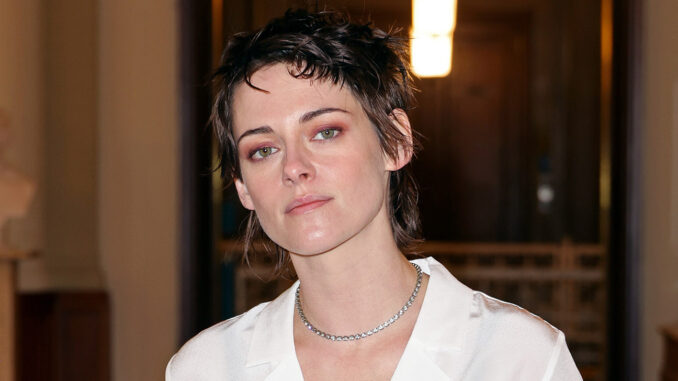
Cannes, that glittering crucible nestled on the French Riviera, is more than just a film festival; it is a stage where narratives are born, reborn, and occasionally, hauntingly revisited. It is a place where the collective consciousness of the cinephile and the tabloid reader alike converge, scrutinizing every frame, every fleeting glance. In its recent iteration, Cannes became the unlikely backdrop for two profoundly different, yet curiously connected, spectacles: the reunion of a cinematic power couple whose past was as public as their present roles are private, and the critical embrace of a film that dares to marry aesthetic splendor with unflinching brutality, "Die My Love."
The first spectacle was an echo, a ghost in the machine of the present. Robert Pattinson and Kristen Stewart, once the epicenter of the global "Twilight" phenomenon and the object of an obsessive, often intrusive, public romance, found themselves once again orbiting each other on the crimson carpet. Years have passed since their supernova romance imploded under the weight of relentless scrutiny. Both have meticulously shed the skin of their teen idol personas, transforming into serious, boundary-pushing actors – Pattinson with his haunted intensity in indie gems and blockbusters like "The Batman," Stewart with her raw vulnerability and fearless choices in films ranging from "Spencer" to avant-garde projects.
Their reunion at Cannes, where Pattinson presented David Cronenberg’s The Shrouds and Stewart showcased Payal Kapadia’s The Seed of the Sacred Fig, was not a rekindling of romance, but a poignant tableau of professional respect and shared history. The camera flashes, though aimed at their current artistic endeavors, inevitably captured the unspoken narrative that shimmered between them. It was a reunion less about personal reconciliation and more about the triumph of individual artistry over a collectively imposed past. They stood as living testaments to evolution, each having navigated the treacherous waters of extreme fame to emerge as artists on their own terms. The 'reunion' was a subtle, almost academic, acknowledgment that while the personal drama had faded, the professional journey they both embarked on, stemming from that shared, explosive origin, had led them to the very pinnacle of cinematic recognition. Cannes, in this instance, became a mirror, reflecting not just their present brilliance, but the lingering shadows and eventual liberation from their intertwined past.
In stark contrast, yet equally compelling in its confrontational beauty, was the reception of "Die My Love," a film lauded for its "beautiful cruelty." This phrase, an audacious oxymoron, captures a particular type of cinematic achievement – one that does not shy away from the grotesque, the painful, or the truly disturbing, but frames it with such artistic precision and aesthetic grace that the viewer is left captivated rather than repulsed. It's a cruelty that avoids gratuitousness, opting instead for a scalpel-like precision that exposes the raw nerves of human experience.
What makes cruelty beautiful in cinema? It is often found in the unflinching gaze, the refusal to sanitize or sugarcoat the harsh realities of existence. "Die My Love," through its critical acclaim, suggests a film that likely plunges into the depths of despair, the complexities of toxic relationships, or the visceral reality of grief and mental illness. The "cruelty" here is not necessarily physical violence, but the psychological torment, the existential dread, the raw exposure of uncomfortable truths. But it is beautiful because this exposure is rendered with exquisite cinematography, a haunting score, and performances so profoundly authentic they resonate long after the credits roll. The aesthetic beauty acts not as a distraction, but as an enhancement, drawing the viewer deeper into the discomfort, making the unbearable somehow bearable to witness, and ultimately, profoundly moving. It’s the paradox of the sublime: finding a strange awe in terror, a profound understanding in pain. The film, in its refusal to avert its gaze, gifts the audience a cathartic confrontation with the darker facets of humanity, achieving a unique form of artistic purification.
Cannes, then, in its singular ability to magnify both personal histories and artistic statements, presented these two distinct yet resonant narratives. The reunion of Pattinson and Stewart spoke to the enduring power of personal narratives to entwine with public perception, and the ultimate triumph of individual artistic will over a pre-assigned celebrity fate. "Die My Love," on the other hand, exemplified cinema's audacious capacity to challenge, to disturb, and to illuminate the darkest corners of the human psyche with a grace that transforms suffering into art. Both instances, in their own way, illustrate the profound impact of the moving image: to revisit ghosts of the past, to confront the harrowing present, and in doing so, to define the ever-evolving landscape of our shared human experience.
